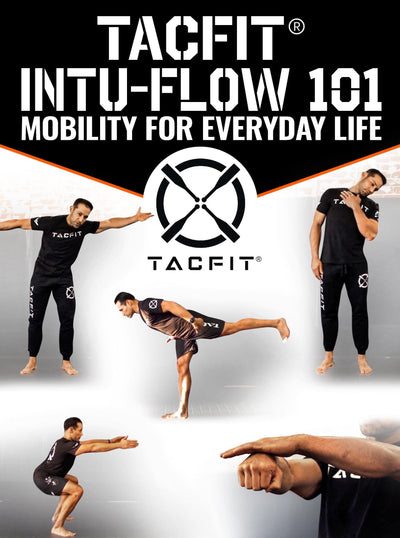Kettlebell Swing Form
Proper kettlebell swing form is essential to reap the full benefits of this dynamic exercise while minimizing the risk of injury. Mastering the correct technique ensures that you engage the right muscles and perform the movement safely and effectively.
So, how do you do kettlebell swings? To begin, stand with your feet slightly wider than shoulder-width apart, with the kettlebell placed about a foot in front of you. Your toes should be pointed slightly outward. The starting position involves a slight bend in the knees and a strong engagement of the core muscles to maintain stability throughout the movement.
As you initiate the swing, focus on the hip hinge. Imagine pushing your hips back as if you're trying to touch a wall behind you with your buttocks. Keep your back straight, maintaining a neutral spine with a natural arch in the lower back. Avoid rounding your shoulders or hunching over during the movement.
What this article covers:
Finishing the Swing
When you reach the bottom of the hinge, use a strong hip thrust to drive the kettlebell forward. As your hips extend, the kettlebell will swing forward in front of you. This hip-driven motion is the key to kettlebell swings. The power should come from your hips and glutes, not your arms. Your arms are simply guiding the kettlebell and maintaining a loose grip on the handle.
The kettlebell should swing up to about chest height, and at the top of the movement, your hips should be fully extended. At this point, the kettlebell should float momentarily before it starts to swing back down between your legs. As the kettlebell descends, keep your arms extended and allow your hips to hinge back, guiding the kettlebell through your legs.
It's crucial to avoid using your shoulders or arms to lift the kettlebell. This can strain your upper body and detract from the intended engagement of your posterior chain. Keep your shoulders pulled back and down, away from your ears, and let the momentum of the swing do the work.
Throughout the entire movement, maintain a strong core and neutral spine. Avoid arching your lower back or excessively leaning backward. The power generated by your hips and the engagement of your core will create a fluid swinging motion that engages your glutes, hamstrings, lower back, and core muscles.
Benefits of Kettlebell Swings
Kettlebell swings are a dynamic and multi-faceted exercise that target several key muscle groups while providing a range of benefits for overall fitness. Primarily, kettlebell swings work the muscles of the posterior chain, which includes the glutes, hamstrings, lower back, and even the upper back muscles to some extent. The explosive hip thrusting motion involved in kettlebell swings engages these muscles, helping to develop strength, power, and muscular endurance. The core muscles also play a crucial role in stabilizing the body throughout the movement, leading to improved core strength and stability over time.
What are the other benefits of kettlebell swings? Beyond muscle engagement, kettlebell swings offer a host of benefits that contribute to a well-rounded fitness routine. One significant advantage is their capacity to enhance cardiovascular fitness. The continuous motion and explosive nature of swings elevate heart rate and breathing, providing an effective cardiovascular workout that can boost endurance and stamina. This combination of cardiovascular conditioning and muscle engagement makes kettlebell swings an efficient exercise for those looking to improve overall body composition and burn calories.
Moreover, kettlebell swings contribute to functional strength and improved movement patterns. The hip hinge motion closely mimics movements used in daily activities and sports, making them a valuable exercise for enhancing biomechanical efficiency and reducing the risk of injury. The dynamic nature of kettlebell swings also fosters improved coordination and balance, as you need to synchronize various muscle groups to perform the movement correctly.
Incorporating kettlebell swings into your fitness routine can lead to a range of benefits, including increased fat loss due to the high-intensity nature of the exercise. The explosive nature of the movement triggers the body's natural fat-burning mechanisms, making it an effective tool for those seeking weight loss. Additionally, the minimal equipment required for kettlebell swings makes them accessible and convenient for various settings, whether you're at home, in the gym, or even outdoors. As you progressively increase the weight and intensity of your kettlebell swings, you'll also notice improvements in grip strength, joint mobility, and overall power output.
In essence, kettlebell swings offer a comprehensive workout that targets multiple muscle groups, enhances cardiovascular fitness, and promotes functional strength. Regular practice with proper form can lead to improved body composition, increased endurance, and a heightened ability to perform daily activities with greater ease. Whether you're a beginner looking to establish a solid foundation or an experienced athlete aiming to diversify your training routine, kettlebell swings and kettlebell swing alternatives provide a versatile and effective option for achieving your fitness goals.
Remember that safety is paramount. If you're new to kettlebell swings, start with a lighter weight to practice proper form. Video demonstrations and guidance from a qualified fitness professional can be immensely helpful in understanding and mastering the nuances of kettlebell swing form. Regular practice, attention to detail, and patience will help you develop a solid foundation for this highly effective exercise.
Did you find the blog helpful? If so, consider checking out other guides:
- 100 Kettlebell Swings a Day
- Kettlebell Swings with a Dumbbell
- 10,000 Kettlebell Swing Challenge
- How Many Kettlebell Swings
- 300 Kettlebell Swings a Day
- 50 Kettlebell Swings a Day
- 200 Kettlebell Swings a Day
- Kettlebell High Pull
- Kettlebell Pullover
- Kettlebell Pull Exercises
- Kettlebell High Pull Muscles Worked
- Pull Throughs and Kettlebell Swings
- The Kettlebell Plank Pull Through
- Kettlebell Swing Squat
- Kettlebell Split Squat





